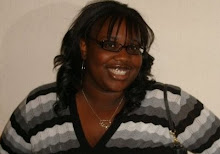Wednesday, December 2, 2009
Top Ten Things Learned PRCA 3711/ 4711
Monday, September 28, 2009
TYPOgraphy
If you are looking to do something different with your fonts and dont know where to begin you can go to sites like dafont.com for some cool ideas. And if you are struggling with exactly how to install a font, windows has come up with a tutorial that is very user friendly http://www.microsoft.com/typography/truetypeinstallXP.mspx
Sunday, September 20, 2009
Segmenting Publics
One way that I could look at my audience is by demographics. Demographics are simply characteristics of the human population like age, sex, and race to name a few. With GSU being such a diverse school this way of segmenting is one that could very much work. But to be more specific I want to take a look at the students in different levels of classification. This one the best means to segment this public because as a student progresses in the university the needs of this student is changing.
Many students of the same classifications share similar characteristics and most of these shared things have been researched in the past and is now just a known fact. For example, I know that every freshman of Georgia Southern University is required to take a GSU orientation class. With this information am able to locate a place I can reach out to this specific class.
Another way that I can segment our public is a way that we already do this in SGA. We are divided up into representatives in our colleges. In my brochure I could separate information for each college by using bold headlines that help the students quickly information that effects thir college.
~London
Monday, September 14, 2009
What's this CRAP? A brief analysis of Robin Williams principles of design
Tuesday, August 25, 2009
Save the Whales Campaign by PETA

PETA (People for Ethical Treatment of Animals) is a company that stands for the “rights” of animals around the world. Their main focuses include animals in factory farms, laboratories, in the clothing trade and also in the entertainment industry. Recently the have started a new campaign to push people to become vegetarians.
The name of the campaign is the “Save the Whales” campaign. This campaign has nothing to do with actually saving a whale. The whale in this case is referring to people, more specifically overweight people. Their underlying slogan to the campaign is “Lose the Blubber. Go vegetarian.” There has been a big stir in the media about this campaign, numerous amounts of people are taking this ad to be offensive.
I think that there is a reason for people to cause an uproar about the campaign because it is really a very unethical campaign. The funny thing is the PETA’s name states that they stand for ethics and even though it is for animals, I feel it should be respected for everyone. But aren’t humans animals too in a sense?
When asked about the new campaign and its controversy a spokesperson from the campaign states that they feel that animals don’t understand what is being done to them and they need someone to speak for them while on the other hand humans are able to defend themselves and can understand. They feel that this ad is not to be taking offensively but if it is then people can do something about it. My question for PETA is if you are going to offend humans on earth and then you upset them….who will be with you to save the animals?
Saturday, August 22, 2009
Introduction of Me!!
Well just a little about me. I am a Senior Public Relations major at Georgia Southern University and very proud to be an Eagle! I plan on getting a Master's in Buisness Administation and then later go on to work in a Marketing Position. My ultimate goal is to work for Google!! I also love staying involved!! Right now I serve as a Senator on GSU's Student Government Association where I represent the student body and their views!!
Well not much to talk about right now but tune in soon. Once I get the whole blogging down there will be much entertainment from me on here!!
